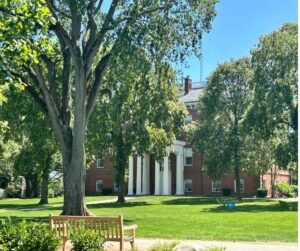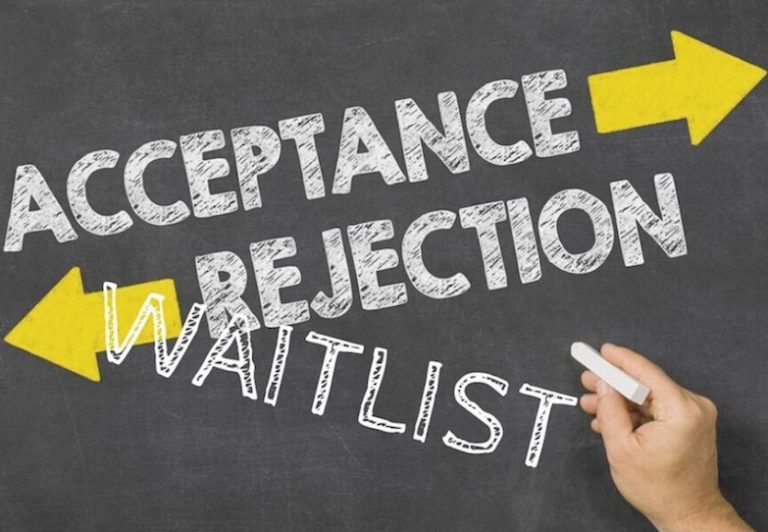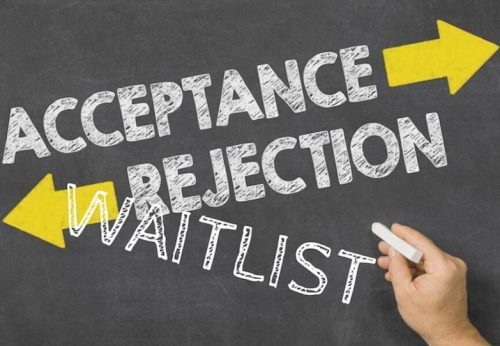Impact of Recent Legislation on Colleges and Student Costs
Last Updated on July 16, 2025 by Jill Schwitzgebel
Partly for my own understanding, and partly to share with my followers, I tried to find an article that summarizes the potential impact of all of the recent legislation and executive orders on higher education costs. I keep reading blurbs and hot takes on LinkedIn, and have seen several articles that cover individual topics, which I will link to at the bottom of each section. (Yes, I realize this is not how to do citations, but…this is not an academic paper and I mainly just didn’t want you to think I pulled information out of thin air!) This is really just an attempt to gather information about recent changes that will impact college costs, in one place.
Some of the changes below will impact families and students in an obvious and direct way, but others will have an impact on colleges’ bottom lines that may ultimately affect your costs as well. Here is how I believe the recent legislation and executive orders regarding student loans, endowment taxes, and international student visas are likely to impact college and student costs.

Student Loans
While much of the recent legislation impacts graduate/medical/law students, it’s important to understand that this will have downstream effects. All of the changes, with the exception of the accountability system, will take effect in July 2026.
But, let’s begin with how undergraduates are directly affected:
- Student loan rules for undergraduates are essentially unchanged. The Senate kept subsidized loans.
- Undergraduate loans WILL count toward the lifetime borrowing limit of $257,000. (I know, this seems crazy high, but see my comments below – it could impact medical school students.)
- Parent PLUS loans are now capped at $65,000 per student, total, and at $20,000 per year. Parents now may only borrow if their student has maxed out their unsubsidized federal loans.
- Pell grants will now be awarded last, after any other aid or scholarships. Their grant could be reduced if they have scholarship money. (About 40% of undergraduates use Pell grants.)
- Colleges are now subject to a new accountability system and will lose funding for any programs where the median earnings of graduates are less than a comparable working adult within four years of completion/enrollment. Colleges risk losing Direct Loan eligibility after 2 out of 3 years of failure to do so. (This actually was put in place last year and recent legislation affirmed commitment to it.) It is expected to have the largest impact on certificate programs and for-profit colleges (and remember, I recommend avoiding those anyway), with about 40% of those programs being affected. Ninety-two percent of nonprofit public university programs and 97% of nonprofit private institution programs will not be impacted.
Thoughts:
Overall, this is significantly better than what many in the not-for-profit higher ed world had been bracing for. These changes however, will have the biggest impact on lower income undergraduate students who receive Pell grants at four year colleges. It is possible, even likely, that even with what seems like a small reduction in funding, this will impact their ability to attend college. Due to other factors described below, colleges may not have the financial ability to make up for the funding students could lose.
I have not seen an analysis of the number of students that will be impacted by the new restrictions on Parent PLUS loans. Anecdotally, on college parent pages, it seems to me that there are a lot of families that utilize those loans to help finance college, but of course I don’t know whether they have routinely taken over $65K/student or more than $20k/year. It is quite possible that colleges will see reduced attendance due to the new cap, or if families request colleges provide more in financial aid to make up for what they needed in loans. And, it’s unlikely that colleges will be able to do so without raising revenue elsewhere.
And here is how graduate/medical/law students are affected:
- For all graduate school degrees, federal loans are capped at $100,000
- For all professional degrees – medical, dental, law school – loans are now capped at $200,000 total AND there is an annual borrowing limit of $50,000.
- Grad PLUS loans are being eliminated.
Thoughts:
Graduate Students
To many people, these caps seem more than reasonable – we are talking about huge sums of money! Consider though, that a Ph.D. program is generally a minimum of 4 years and this is often after completing a two-year masters degree program. These programs cost tens of thousands of dollars in tuition and fees. And then there are living expenses. So, even if a student receives full funding for the program itself (and unlike with masters programs, I only recommend attending a Ph.D. program if the student is receiving full funding), they have to cover their living expenses. And for students who are getting masters degrees, which are commonly two years long, funding is NOT common – so they have to cover both the cost of tuition, AND the cost of their living expenses for two years. Students seeking graduate degrees in fields like occupational or physical therapy face the same hurdles. Their programs are typically three years long, without much funding available. Students needs to be able to pay for both their tuition and supplement their living expenses while in school. Tough to do on $100K.
While students who get Ph.D. funding almost always receive living stipends too, I’ve seen those stipends as low as $14,000 – there is nowhere that a graduate student can afford to live on $15,000! So, they need loans to cover their living expenses as they work on their degree.
I think we can assume that there is about to be a drop in the number of students getting graduate degrees. Graduate programs are often cash cows for colleges who receive revenue from graduate student tuition, so any drop in graduate student population is absolutely going to affect their budget bottom line.
Professional Students
This is likely doable for law students. But, it’s honestly difficult to see how this works for medical students, especially with the $257,000 lifetime cap. Medical school is four years long and the average annual cost in tuition is almost $60,000. The cheapest public medical school still costs over $167,000 in total tuition. This does not include living expenses, so this would leave $33,000 for four years worth of living expenses! These students cannot work their way through medical school to earn money. So, unless the student has the financial means to support themselves through school, this puts medical school out of reach for the average student. While I don’t think medical schools will have any trouble filling their seats, it may very well impact who is able to attend, and we stand to lose talented aspiring doctors. As a friend of mine with two daughters who have recently completed medical school said, “Neither of my daughters would be doctors if this was in place 8 years ago…And they’re already giving up their 20s and 30s, so don’t tell me (the solution is) to save up and go.”
Repayment Rules:
- Current hardship and unemployment student loan repayment deferrals are eliminated. Borrowers can still request deferment, but for a shorter time and interest will accrue during that time. This year, 70,000 borrowers were in a hardship deferment.
- There will now be a choice of only two repayment plans.
- Borrowers who previously qualified for Public Service Loan Forgiveness may lose access to that program, if the organization they work for engages in work now considered to be illegal like DEI, immigration or gender-affirming-care.
https://www.reuters.com/world/us/how-trumps-tax-cuts-affect-federal-student-aid-2025-07-08/
https://apnews.com/article/college-for-profit-student-debt-tuition
https://www.thirdway.org/blog/q-a-whats-in-the-new-gainful-employment-rule
https://educationdata.org/average-cost-of-medical-school
https://time.com/7301329/student-loans-forgiveness-pslf-trump-executive-order/
Whew that was long! Next up:
Endowment Tax
Colleges have endowment funds to ensure the financial viability and future of the institution. They are investments that the school can periodically pull from to cover certain costs, while growing over time. Typically, these endowments come from wealthy donors and come with directions for its specific use. Thus a college may not be able to use the funds for a purpose other than that. Schools who have affluent alumni are schools that have the largest endowments. And naturally, having large invested endowments means that those schools earn more on their funds. Endowments are what allow some colleges to be need-blind for admission and to provide generous financial aid to their students.
Since 2017, a 1.4% tax has been applied only to private colleges with at least 500 tuition-paying students and endowment assets exceeding $500,000 per student. This impacted 50ish colleges. With the July 2025 legislation, here is the new endowment tax structure, which begins this year:
- Institutions with under 3,000 students are exempt from paying any endowment tax, so small colleges with large endowments like Amherst and Wellesley, escape the tax.
- For other colleges, the endowment tax is tiered. For endowments of $500K–$749K per student, the tax is 1.4%, for $750K–$2M per student it is now 4%, and for endowments over $2M per student, 8%.
Thoughts
This is a huge win for the smaller institutions that have large endowments – many of them had been paying taxes on their endowments previously. There are still around 56 colleges that will be impacted under this new plan, some which had not been previously impacted. This is a huge strain on schools like Harvard and Yale, with a giant tax increase. No matter what you may think of the size of their endowment, this is going to hurt. Since over 50% of their endowment funds are used to provide financial grants to students, with the bulk of the rest spent on things like research and faculty positions, it is hard to imagine that this will not have an impact on what they can offer to students, both financially and academically. It is widely expected that it also may have an impact on donor gifts, further reducing the size of their endowments.
Like medical schools, I doubt that any of these colleges will have empty seats, but I do see it having trickle down effects on affordability and access for lower income students. Will the colleges eventually become need-aware for admission? That remains to be seen, but may not be totally out of the question.
https://www.usnews.com/education/best-colleges/articles/what-is-an-endowment-for-a-college
https://www.highereddive.com/news/higher-ed-endowment-tax-congress-republicans/743486
https://www.cnbc.com/2025/07/08/endowment-tax-big-beautiful-bill-impact-colleges.html?
https://en.wikipedia.org/wiki/List_of_colleges_and_universities_in_the_United_States_by_endowment?
https://www.thecrimson.com/article/2025/7/5/big-beautiful-bill-endowment-tax/
International Students
Currently, international students make up almost 6% of students attending US universities. Typically, these students pay two to three times as much as American students pay to attend universities here and they receive no aid, which means the loss of these students can have a significant impact on college revenue. This is even more true at the 11% of colleges that have greater than 20% of their students from other countries!
In May, the Trump administration put a pause on processing student visas for international students. Other students have had their visas pulled entirely and two percent of students come from a country with a current travel ban. Processing has since resumed, with some additional requirements in place for students, but it’s not clear whether all of the visas will be processed in time for the start of the school year. It’s also not completely clear how many students may opt not to attend.
You may be surprised by some of the university systems with the highest numbers of international students. While NYU in first place may not shock you, how about Northeastern in Boston at number two? Or maybe you’ll be surprised that University of North Texas and Purdue are both in the top ten for numbers of international students.
Thoughts
Some colleges’ finances are going to be hit harder than others by any loss of their international student population – and it’s a virtual certainty that all colleges will lose some students. Graduate students make up a larger portion of international students than they do the undergraduate population, and graduate degrees have higher tuition than undergraduate degrees, making that loss of income sting even more. Combined with new loan limits that could affect the number of domestic graduate students on campuses, this could be a substantial impact to colleges. Economists seem to suggest that the greater loss could be to the economy, especially the local economies near the colleges.
https://www.brookings.edu/articles/international-college-students-matter-for-the-economy/
https://shorelight.com/student-stories/the-impact-of-a-20-decline-in-international-students/
Bottom Line
When you combine all of the factors above with the decreasing population of college-age students in the US, colleges are in for a rough time financially and they’re going to need to do some adjusting. In short, all of the above poses at least a small threat to some institutions of higher ed in the US. Most colleges don’t have a huge financial safety net and their operating budget is fragile. To try to save money, colleges have already begun to cut faculty and staff and their salaries – colleges ranging from from Duke to Boston University to Minnesota. I am always an advocate for checking the financial health of any college your teen is seriously considering. It may also be worth checking out how dependent the college is on graduate student and international student tuition revenue.
Maine just pulled back on free tuition at community colleges, which is a sign that they’re tightening their education belt. I’ve seen at least one suggestion that we will start to see more college mergers, and possibly some interesting ones. I do think that colleges will make every attempt not to increase tuition (more than their usual increases), although I’m not sure that will be possible for many. It’s likely that colleges will tighten up on merit aid and offer less of a discount, or fewer of them, than they have in recent years. The most competitive colleges are likely to remain competitive, but those that are less selective may need to innovate in new ways to attract students.
Finally, one potentially positive effect is that you may see admission rates go up in the years ahead, amid both the declining college-age population and the atmosphere of uncertainty. Some colleges may even choose to increase their size to accommodate more students to try to make up for lost revenue.










One Comment